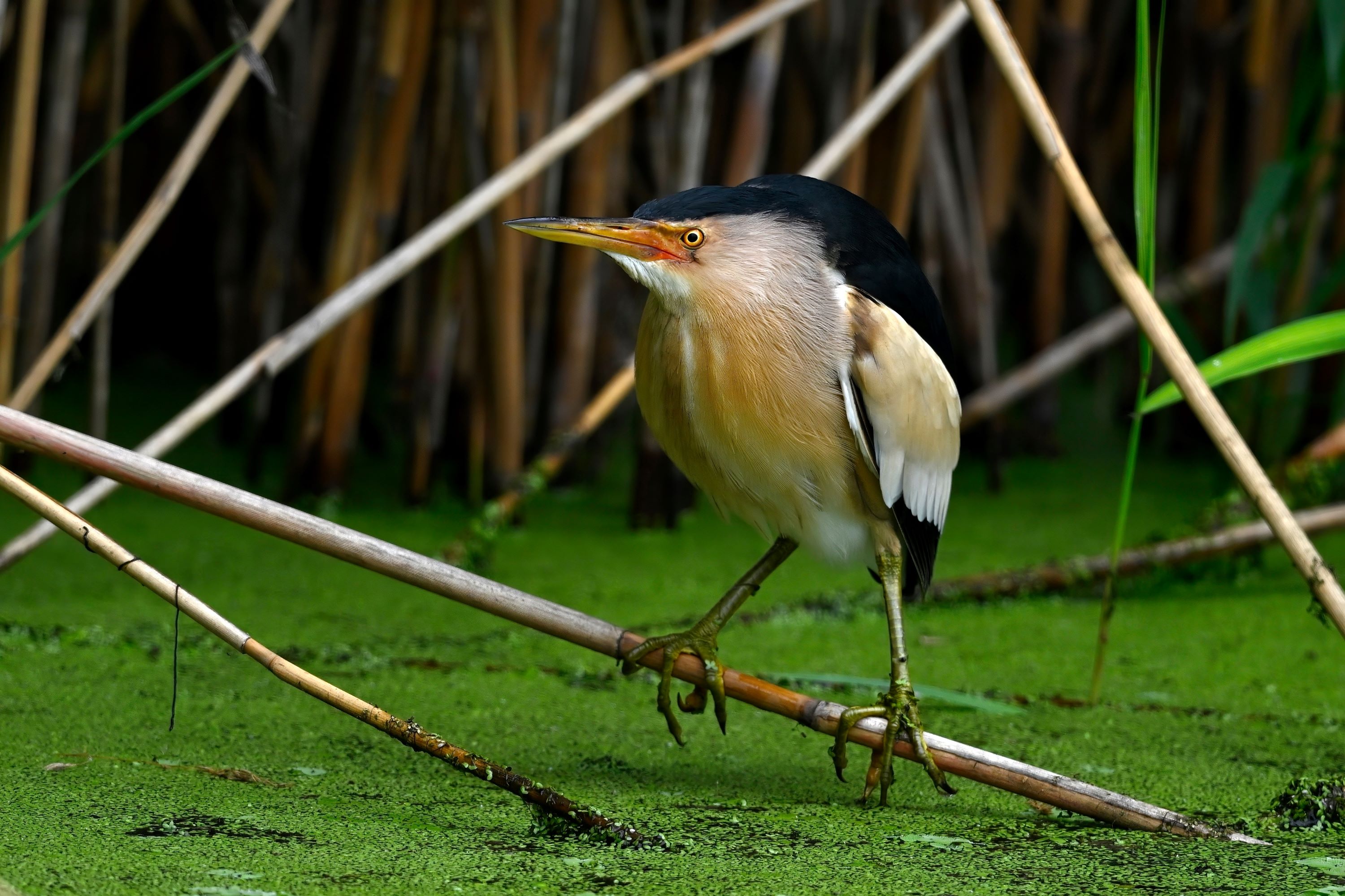
Little Bittern: A Stealthy Inhabitant of the Wetlands
Introduction to the Little Bittern
The Little Bittern, known scientifically as Ixobrychus minutus, is a small heron belonging to the family Ardeidae. Renowned for its elusive nature and diminutive stature, this bird is a master of camouflage in its wetland habitat, making it an intriguing subject for birdwatchers and naturalists.
Physical Description
The Little Bittern is one of the smallest herons, measuring only about 25-36 cm in length with a wingspan of approximately 40-58 cm. The male boasts a striking black and brown plumage with a glossy black back and crown, contrasting sharply with its buff-colored underparts. The female and juvenile Little Bitterns have a more subdued coloration, with brown streaks and a paler overall appearance.
Habitat and Distribution
This species is primarily found in the reed beds of freshwater wetlands, including marshes, swamps, and riverbanks. The Little Bittern has a wide distribution, ranging across parts of Europe, Asia, Africa, and Australia. It prefers habitats with dense vegetation that provides cover and ample hunting grounds.

Behavior and Lifestyle
The Little Bittern is a secretive and solitary bird, known for its skulking behavior. It is most active during twilight hours, though it may hunt at any time of day. During the day, it remains well-hidden among the reeds, making it challenging to spot.
Feeding Habits
Its diet consists mainly of small fish, amphibians, and insects, which it hunts in shallow waters. The Little Bittern uses a patient hunting strategy, waiting motionlessly for prey before striking swiftly with its sharp bill.
Breeding and Nesting Habits
Breeding typically occurs during the warmer months. The Little Bittern constructs its nest in dense wetland vegetation, often close to the water's surface. The nest is a platform made from reeds and grasses, well-concealed among the marsh plants.
Egg Laying and Incubation
The female typically lays a clutch of 4 to 6 eggs, which are pale blue or green in color. Incubation is mainly the responsibility of the female and lasts about 17 to 19 days. The male may assist in guarding the territory.
Chick Rearing and Parental Care
Chicks are altricial and rely heavily on their parents for food and protection. They are fed regurgitated food by both parents and grow rapidly, becoming increasingly independent as they mature.
Vocalizations and Communication
The Little Bittern is relatively quiet but can produce a variety of calls, particularly during the breeding season. These include soft cooing and more urgent alarm calls, used for communication between mates and warning of potential threats.
Conservation Status
The Little Bittern is currently listed as Least Concern by the IUCN. However, it faces threats from habitat loss and degradation, particularly in the draining and disturbance of wetlands. Conservation efforts are crucial for protecting these vital habitats.
Similar Species and Taxonomy
The Little Bittern is part of the order Pelecaniformes and the Ixobrychus genus, which includes several small heron species. It shares habitat preferences and behaviors with other Ixobrychus species but is distinguished by its size, coloration, and regional distribution.
The Little Bittern in Utah
The Little Bittern is not found in Utah or North America, as its habitat range is confined to the Old World. Bird enthusiasts in Utah can observe other members of the Ardeidae family, such as the American Bittern, in local wetlands.
Conclusion
The Little Bittern, Ixobrychus minutus, is a captivating bird that adds intrigue and diversity to the wetland ecosystems of Europe, Asia, and Africa. Its secretive nature and specialized habitat preferences make it a unique and interesting species within the heron family. The preservation of wetland habitats is essential for the survival of the Little Bittern and underscores the importance of global efforts in wetland conservation.